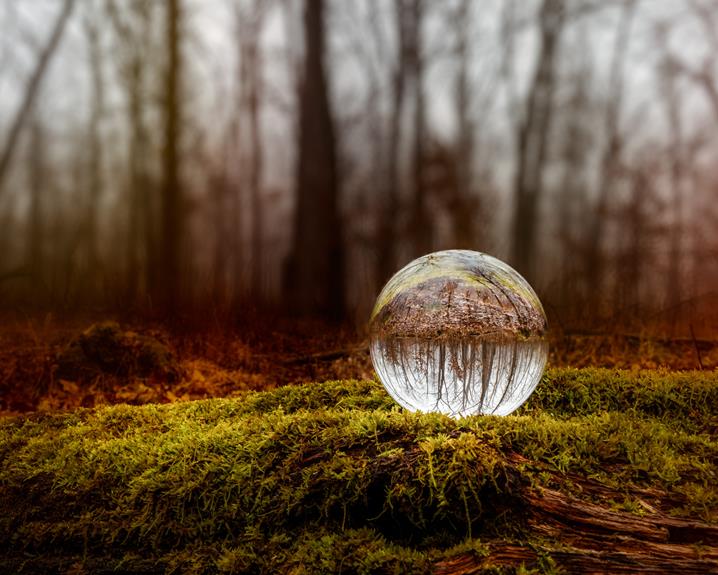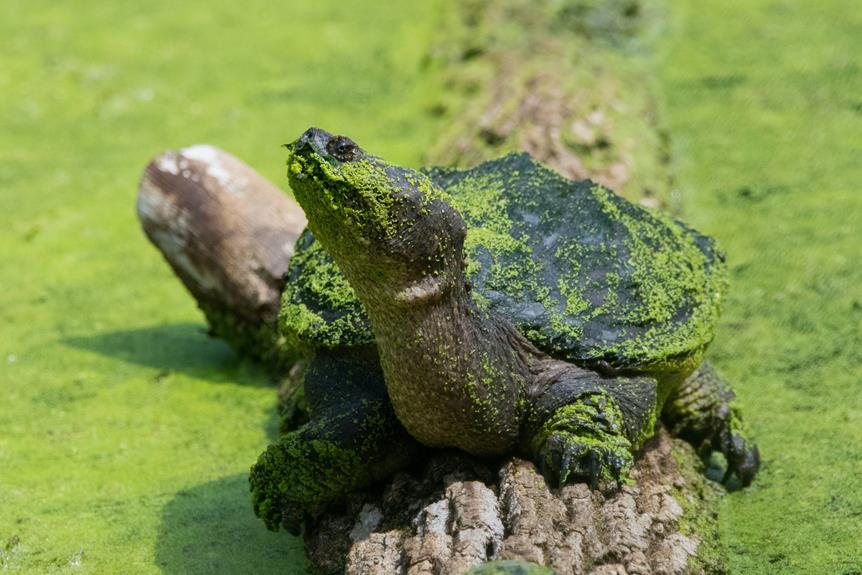Excessive light exposure in aquariums can lead to a myriad of issues that may not be immediately apparent to the untrained eye. The delicate balance of lighting intensity is crucial for the well-being of aquatic plants, serving as a cornerstone for a thriving underwater ecosystem.
As aquarists navigate the complexities of maintaining optimal lighting conditions, recognizing the subtle yet telling signs of light saturation on plants becomes imperative. From overgrown foliage to stressed fish, the manifestations of excessive light can be varied and impactful. Understanding these indicators is key to ensuring a healthy and sustainable aquatic habitat.
Key Takeaways
- Overgrown plants and rapid expansion signal excessive light exposure.
- Increased maintenance burden and fish behavioral changes indicate lighting issues.
- Color changes and brown edges on leaves show stress from too much light.
- Algae overgrowth, rotting leaves, and stressed fish are consequences of excessive lighting.
Overgrown and Rapidly Expanding Plants
Overgrown and rapidly expanding aquarium plants can serve as visible indicators of excessive light exposure, reflecting the imbalance in the aquatic environment's lighting conditions. When faced with this issue, implementing proper pruning techniques becomes crucial to maintain plant health.
Addressing light duration is equally important to prevent further overgrowth. Nutrient deficiency may also arise due to excessive light intensity, impacting plant growth negatively. Understanding the delicate balance between light exposure and nutrient availability is key in managing the growth of aquatic plants effectively.
Increased Maintenance and Fish Restrictions
An escalation in maintenance requirements and limitations on fish movement can manifest as consequences of excessive light exposure in aquarium environments.
Effects of Too Much Light on Aquarium Plants:
- Stunted Plant Growth: Excessive light can hinder plant growth by causing stress and nutrient imbalances.
- Increased Maintenance: Overexposure to light may lead to more frequent pruning, cleaning, and nutrient adjustments to maintain plant health.
- Fish Restrictions: Too much light can create uncomfortable conditions for fish, leading to restricted movement and hiding behavior.
Maintaining an optimal light duration of 8-10 hours daily is crucial to prevent these issues and ensure the well-being of both plants and fish in the aquarium.
Changes in Fish Behavior and Color
Excessive light exposure in aquarium environments can trigger noticeable changes in both fish behavior and coloration. Fish may exhibit signs of stress such as increased aggression, reduced appetite, and heightened susceptibility to diseases. Additionally, fish coloration can be affected by excessive light, with colors appearing faded or dull. Stress caused by too much light can lead to fish losing their vibrant colors, impacting their overall health and well-being.
Monitoring fish behavior and color changes is crucial in adjusting the aquarium lighting to ensure a healthy and balanced environment for both fish and plants. It is essential to address these issues promptly to prevent further stress and maintain optimal conditions in the aquarium.
Brown Edges on Leaves (Heat Stress)
Exposure to excessive light in aquarium environments can lead to heat stress in aquatic plants, characterized by the development of brown edges on their leaves. This condition can be detrimental to the overall health and appearance of the plants.
To address and prevent heat stress in aquarium plants, consider the following:
- Proper Light Intensity: Ensure the light intensity is suitable for the specific plant species to prevent overheating.
- Light Color Effects: Opt for light sources that emit a balanced spectrum of colors to promote healthy plant growth and minimize heat stress.
- Monitoring and Adjusting: Regularly monitor the plants for signs of heat stress, such as brown edges on leaves, and adjust the lighting conditions accordingly to maintain optimal plant health.
Rotting Leaves and Algae Overgrowth
Rotting leaves and algae overgrowth in aquarium plants can be indicative of imbalanced lighting conditions and nutrient levels, posing risks to the overall health of the aquatic ecosystem. Preventing rotting leaves involves maintaining appropriate lighting duration and intensity, ensuring plants receive sufficient but not excessive light.
Controlling algae growth is crucial to prevent overgrowth that leads to rotting. This can be achieved by implementing a balanced nutrient regimen, ensuring adequate water circulation, and considering algae-eating organisms like snails or shrimp. Monitoring nutrient levels, conducting regular water changes, and avoiding overfeeding can also help manage algae growth.
Stressed Fish and Ineffective Darkening
Inadequate darkening strategies in aquarium environments can contribute to increased stress levels in fish and hinder their natural behavioral patterns. This can lead to various issues impacting fish health and overall well-being.
Here are three key points to consider regarding stressed fish and ineffective darkening:
- Fish Health: Insufficient darkening can cause stress in fish, leading to discomfort, aggression, decreased appetite, susceptibility to diseases, poor scale quality, and weight issues.
- Light Intensity: Inappropriate light intensity due to ineffective darkening solutions can further exacerbate fish stress levels, disrupting their natural rhythms and behaviors.
- Behavioral Patterns: Inadequate darkening can disturb fish behavior, affecting their natural activities and social interactions within the aquarium environment.
Frequently Asked Questions
How Can I Determine the Right Amount of Light for My Specific Aquarium Plants?
Determining the optimal light for specific aquarium plants involves assessing light intensity, spectrum, and duration. Research plant species requirements, consider tank size, and monitor plant response. Adjust lighting timing as needed to promote healthy growth and prevent issues.
Are There Any Visual Cues That Indicate My Aquarium Plants Are Not Receiving Enough Light?
Insufficient light intensity can hinder plant growth rates, leading to stunted growth and leaf discoloration. Monitoring visual cues like pale leaves, slow growth, and leggy appearance helps identify low light conditions, indicating the need for adjustments in the aquarium lighting setup.
Can Different Types of Aquatic Plants in the Same Tank Have Varying Light Requirements?
Different aquatic plants in the same tank can have varying light requirements based on their species, growth rates, and compatibility. Light intensity influences photosynthesis and growth, while the spectrum affects plant development, making a tailored lighting setup crucial for optimal plant health.
Are There Any Alternative Methods to Provide Light to Aquarium Plants Besides Traditional Lighting Fixtures?
Alternative methods for aquarium plant lighting include utilizing LED strips for energy-efficient and customizable illumination. Natural sunlight, when controlled, can also benefit plant growth. These methods offer versatility and can cater to specific plant needs beyond traditional lighting fixtures.
How Can I Prevent Light-Related Issues Such as Algae Overgrowth Without Compromising Plant Health?
To prevent algae overgrowth without compromising plant health, adjust light intensity and duration. Consider light spectrum and distance from plants. Maintain 8-10 hours of optimal lighting, utilizing suitable sources like LED or fluorescent. Monitor and adapt lighting to balance plant and algae needs.
Conclusion
In conclusion, excessive light exposure can have detrimental effects on aquarium plants. This can lead to overgrowth, color changes, and stress on both flora and fauna.
By carefully monitoring and adjusting lighting levels, aquarists can cultivate a balanced ecosystem where plants can thrive and fish can flourish.
One interesting statistic to note is that up to 90% of aquarium plants require specific lighting conditions to thrive. This highlights the importance of proper lighting management in maintaining a healthy aquatic environment.





